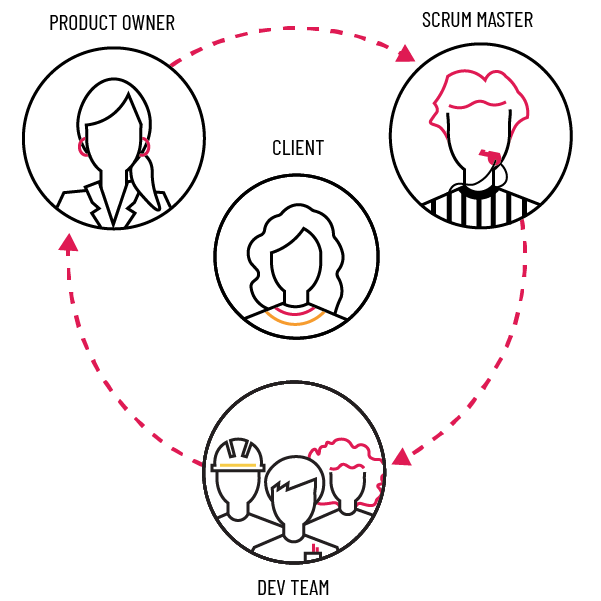10 Ways to Decide If Your Team is Ready for Scrum
Scrum has been used globally for over 20 years and is the most popular Agile framework based on recent studies. However, Scrum is still not an easy framework to adopt, especially if the conditions are not suitable. You may be wondering what I mean by “suitable.” I will elaborate.

I have compiled a list of 10 factors to help you determine how ready your team is to adopt Scrum. This list will also help you determine how ready your team is to adopt any other Agile approach. Review the list to see whether these are worth investigating further before you make a big financial investment.
1. Does your team resist change?
If your team is comfortable with the status quo, this will likely pose an issue sooner or later. The world is unpredictable and dynamic nowadays, and to compete, we need to teams that can pivot and change quickly. This doesn’t mean that you should get rid of everyone on your team who does not like change. But it is important to help build a culture of adaptability. This can be done by introducing small, incremental changes that may help ease the stresses that your team may feel.
2. Does your team prefer to “do what they are told”?
Agile methods typically encourage self-organization and self-management. This means that teams are expected to make decisions based on limited data, and often without seeking their leaders’ approval. If your team is used to following instructions without questioning “why,” the team will likely need help changing their mindset. Team members who are used to “taking orders” will need time to learn to make decisions. However, this will likely lead to mistakes; these team members will need your help to learn that it is okay to not be perfect. Learning from errors is an important element of doing work in an “agile” manner. You can help this by reinforcing positive behaviors and avoiding penalizing mistakes; this will help build psychological safety that opens the door to the development of a growth mindset.
3. Is your team afraid to experiment with new tools/techniques?

4. Is your team afraid of transparency?
Transparency is a key element of Agile methods because we need visibility into the work that is being done as well as the approaches we are following in order to make adjustments. However, this may surprise you, but not everyone embraces transparency because some team members do not like people to perceive them as incapable or incompetent; to some people, asking for help is a sign of weakness and incompetence, which can significantly impede transparency. If your team does not like to share impediments or ask for help, you may need to provide mentoring or coaching to help them understand that sharing problems is okay and encouraged, and does not reduce their value on the team.
5. Does your team like to learn new things?
It is sometimes difficult to think that some team members are simply content in what they do and what they know, and that they have no desire to learn anything new. This may or may not seem odd to you, but you will likely encounter this sooner or later. What can you do if someone refuses to learn new ways of working? One possible approach is to pair this person with a less experienced team member and ask them to be a mentor; sometimes pair-work can have surprisingly symbiotic benefits in which the mentor can learn just as much from the mentee.
6. Does your team wait for a solution when they are “stuck”?
Similar to self-management, if your team tends to wait for solutions, adopting Agile may be challenging for them. One possible solution is to implement a regular check-in with those who behave in such a manner and challenge them to come up with possible paths to take to resolve the issue.
7. Does your team think everything is “just fine”?

How should you handle this? One possible approach is to introduce small changes based on inputs from the team. Challenge the team to come up with one thing that they think they can improve on to achieve a tangible business objective; for example, improve quality, reduce lead time, increase delivery frequency, etc. Ask the team to establish a measurable goal that they can use as a scoreboard so that the team can focus on achieving the goal. This goal doesn’t need to be super aggressive; by making the goal aspirational yet achievable, the team will hopefully improve their internal drive to succeed, and slowly learn to develop a mindset of continuous improvement over time.
8. Does your team struggle to make decisions without all the information?
Some teams are afraid to move forward on a solution with limited data due to fear of failure or negative consequences. This is another symptom of lack of psychological safety, which you can help to build.
9. Does your team prefer to “lone wolf”?
Having worked with many teams and many intelligent people throughout my career, I have found that some knowledge workers seem to function best when they work alone. How do we build a strong team if we have one or more individuals that do not like to collaborate with others? This can be a tough challenge to overcome.
Pairing such individuals with another less experienced team member may help, but be careful with this approach; be sure to work closely with the “lone wolf” individually and coach that person first to make sure he/she is comfortable with this. Frame this as an opportunity for the “lone wolf” to demonstrate his/her intellectual competence and vast knowledge, which will help other team members improve their capabilities. This may also be organized as an “experiment” that does not necessarily need to be done indefinitely. Try it out for a couple of weeks and see how things go, then adjust as needed.
10. Does your team struggle with deadlines (i.e. a sense of urgency)?
Some teams are afraid of deadlines because they are too stressful. Some teams work at their own leisurely pace without any accountability to delivering, which is dangerous for an organization. How should you manage this? By implementing short increments (i.e. timeboxes) such as a sprint cadence, the team can learn to operate within short cycles that provide key checkpoints that they can work towards without inducing excessive stress. A little sense of urgency is not necessarily a bad thing; sometimes we all need something to motivate ourselves to get up in the morning and do the best work we can. Having a target to aim for should help ensure focus for the team.
Are you ready?
If you were able to go through all ten of these questions, I have a feeling that you answered “Yes” to about half of them. This is not a bad sign! Most organizations are not, and will never be, completely ready for adopting Scrum or any Agile techniques, simply because they have been operating in other ways. There is nothing wrong with this. The purpose of going through these questions is to gain an understanding of where the risks might lie within your teams, which will help you determine the actions you can take to improve your chances of reaping benefits from adopting Agile methods. From this list of actions, you can create your own backlog of tasks which you can then prioritize based on potential impact. If you can reduce the risks and/or impact, you will have a much higher probability of success.



